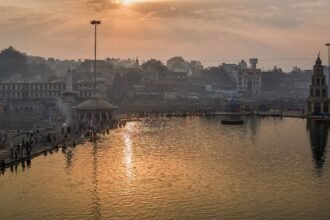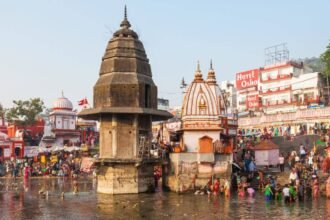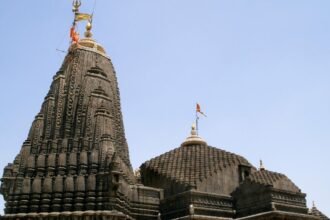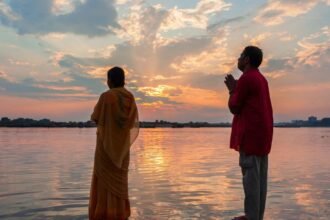Understanding Maha Kumbh Mela: What It Is and Why It Attracts Millions
The Maha Kumbh Mela is the world’s greatest religious event, attracting millions of pilgrims, saints, and tourists from all over the world. At Prayagraj, the holy meeting point of the Ganga, Yamuna, and the fabled Saraswati rivers, the Maha Kumbh Mela, considered the apex of Hindu devotion, is held once every 144 years. What, however, is so important about this event, and why does it draw such large audiences?
What is the Maha Kumbh Mela?
A unique and uncommon spiritual celebration, the Maha Kumbh Mela is the result of centuries-old customs, faith, and devotion. For most people, the Maha Kumbh Mela is a once-in-a-lifetime experience because it happens once every 144 years, as opposed to the normal Kumbh Mela, which happens every 12 years.
The idea of spiritual cleansing lies at the core of the Maha Kumbh Mela. In the belief that it atones for sins and advances them towards salvation, or moksha, devotees congregate at the Triveni Sangam to take a sacred bath.
Also Read : Difference Between Kumbh Mela and Maha Kumbh Mela: Key Insights
What Brings Millions to the Maha Kumbh Mela?
The Maha Kumbh Mela’s spiritual, cultural, and mythological significance are what make it so alluring. This event captivates millions for the following reasons:
1. Cleaning and Liberation of the Spirits
Bathing in the sacred waters during the Maha Kumbh Mela, according to Hindu belief, cleanses the soul, washes away sins, and aids in achieving freedom from the cycle of birth and death. The occasion is made more spiritually potent by the auspicious timing and sacred rites.
2. A Unique Alignment of the Heavens
Based on a unique cosmic alignment between Jupiter, the Sun, and the Moon, the Maha Kumbh Mela is celebrated. The spiritual advantages of attending the event are thought to be enhanced by the divine atmosphere created by this alignment.
3. A Gathering of Saints and Ascetics
Sadhus (holy men), saints, and ascetics from all over India come together during the Maha Kumbh Mela. These spiritual teachers, who frequently come from various akharas (monastic orders), perform rituals and exchange wisdom, transforming the gathering into a centre for spiritual learning.
4. Interaction of Culture and Society
The Maha Kumbh Mela celebrates India’s rich cultural legacy and is more than just a religious event. It offers a forum for individuals from all locales, ethnicities, and religious convictions to unite in the spirit of dedication and solidarity.
5. International Acclaim
UNESCO has named the Maha Kumbh Mela a “Intangible Cultural Heritage of Humanity” that draws tourists from all over the world. The festival draws visitors, scholars, and photographers from all over the world to observe and capture its magnificence.
Crucial Maha Kumbh Mela Rituals
Shahi Snan (Royal Bath): The festival’s most important ceremony is the royal procession and bathing by sadhus and saints, known as Shahi Snan (Royal Bath).
Satsangs and Discourses: Devotees get the opportunity to enhance their comprehension of Hindu philosophy through spiritual meetings and lectures given by well-known saints.
Havan and Yajnas: Fire ceremonies are carried out to seek blessings and cleanse the environment.
Arranging to Attend the Maha Kumbh Mela
It is essential to be prepared if you intend to attend the Maha Kumbh Mela. The following advice is provided:
Reservations for hotels or tents should be made well in advance due to the very high demand.
To get around the crowds, become familiar with the event routes and available transportation.
To ensure a secure and satisfying experience, abide by the established rules.








